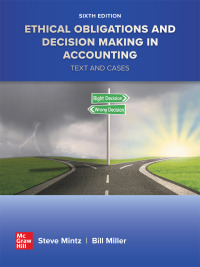Question
In 2006, Damany Lewis was a 29-year-old math teacher at Parks Middle School in Atlanta. The school was in a run-down neighborhood three miles south
Lewis was a teacher when Beverly Hall was Atlanta’s school superintendent. Hall believed that business approaches and the values of the market system could save public education. She set accountability measures for the Atlanta school district and created performance objectives that were tougher than those of No Child Left Behind, the federal program that became law in 2002. Teacher evaluations were linked to students’ performance on standardized tests. Schools whose students did not make appropriate progress toward the standardized test goals received escalating sanctions that culminated in replacement of the faculty and staff, and restructuring or closing of the school.
Parks Middle School was in dire straights because it had been classified as “a school in need of improvement” for the previous five years. Unless 58 percent of students passed the math portion of the standardized test and 67 percent passed the language arts portion, Parks Middle School could be closed down. Its students would be separated and bussed across town to different schools.
“[It] was my sole obligation to never let that happen,” Lewis later told Rachel Aviv in an article about these events in The New Yorker. Lewis had pushed his students to work harder than they ever had in preparing for the test. But he knew that it would be very difficult for many of them to pass. Christopher Waller, the new principal of Parks, had heard that teachers in the elementary schools that fed into Parks had changed their students’ answers on the standardized tests under the guise of erasing stray pencil marks. Waller asked Lewis and other teachers to do the same. Lewis found the exams of students who needed to get a few more questions right in order to pass. He changed their answers. If he did not change their scores, Lewis feared that his students would lapse into “why try” attitudes. They would lose their neighborhood school and the community that had developed within it.
Thanks to Lewis and other teachers, Parks students did better than ever on the standardized tests. Neekisia Jackson, a former student at Parks at the time, recalled, “Everyone was jumping up and down,” after a teacher announced the school had met the goals of No Child Left Behind for the first time. Jackson continued, “We had heard what everyone was saying: ‘Y’all aren’t good enough.’ Now we could finally go to school with our heads held high.”
The same process of changing answers continued at Parks through 2010. By that time, nine other teachers were helping Lewis change answers.
In October of 2010, 50 agents of the Georgia Bureau of Investigation visited Parks and other Atlanta schools. The investigators concluded that teachers and administrators at 44 schools had cheated in the manner that Lewis had. In July of 2012, 110 teachers who had confessed or been accused of cheating were placed on administrative leave, including Lewis. Later that year, Lewis’ employment was terminated.
This case study is based on an article by Rachel Aviv entitled, “Wrong answer: In an era of high-stakes testing, a struggling school made a shocking choice,” that appeared in The New Yorker on July 21, 2014.
Discussion Questions
1. What are the reasons and rationalizations that could have prompted Mr. Lewis to have moral myopia and avoid focusing on the fact that he was falsifying students’ test scores? Alternatively, what could have prompted Mr. Lewis not to have moral myopia?
2. Who are the stakeholders in this case study, and what was at stake for each party? How might each have influenced Mr. Lewis’ actions? Explain.
3. Assume Mr. Lewis decided to break away from moral myopia and gave voice to his values. What do you think he should have done and why? Your answer should include, but not be limited to, the arguments that Mr. Lewis should have made, to whom, and in what context. Present a plan of action.
4. In this case study, what were the benefits of falsifying students’ test scores? What were the harms? Do you think cheating can ever be ethically justifiable? Why or why not?
5. Have you ever been in a situation in which you were presented with the opportunity to cheat on a test or other assignment? Describe the situation. What did you do and why? Looking back, would you have done anything differently? Why or why not?
Step by Step Solution
3.51 Rating (161 Votes )
There are 3 Steps involved in it
Step: 1
Moral myopia is a distortion of moral vision that prevents individuals from seeing ethical issues clearly In the context of Mr Lewis falsifying students test scores various reasons and rationalization...
Get Instant Access to Expert-Tailored Solutions
See step-by-step solutions with expert insights and AI powered tools for academic success
Step: 2

Step: 3

Ace Your Homework with AI
Get the answers you need in no time with our AI-driven, step-by-step assistance
Get Started


